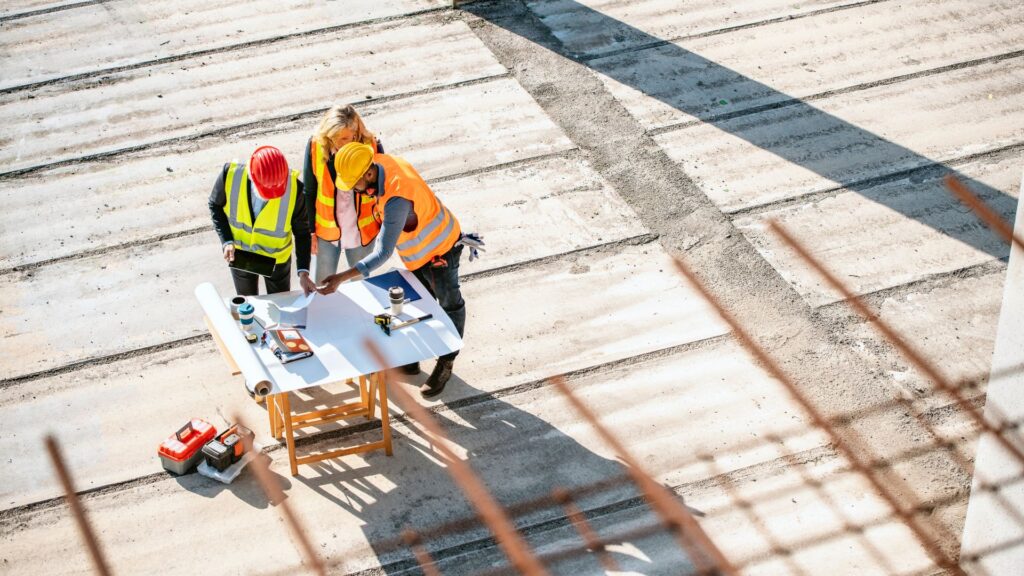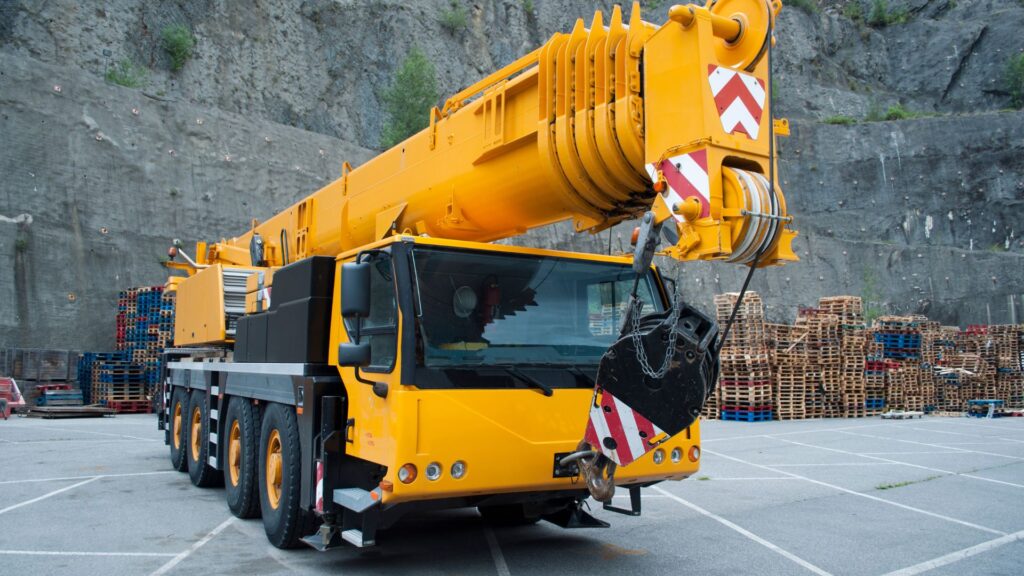When contractors or suppliers aren’t compensated for their work on an Alaska construction project, they have the right to file a mechanics lien to safeguard their payment. A mechanics lien grants the unpaid party a legal claim on the property.
To file a valid mechanics lien, you must complete the Alaska mechanics lien form, which includes essential information such as the legal property description, names of the owner and claimant, and a summary of services provided.
At CRM Lien Services, we specialize in ensuring that you get paid quickly and reliably. We can prepare and file mechanics liens for you in accordance with Alaska law, taking into account Alaska construction lien law and state-specific rules and regulations, including the need for an adequate and ascertainable description of the real estate.
This guide outlines the essential rules, necessary steps, and deadlines involved in filing a mechanics lien Alaska.

Key Takeaways
- Mechanics Lien Rights: In Alaska, contractors, suppliers, and other project participants, including material suppliers and equipment providers, can file a mechanics lien to secure payment for their work or materials.
- Filing Deadlines: Mechanics lien Alaska must be filed within 120 days of the last date of work unless a Notice of Completion (NOC) is filed, which could shorten the deadline to 15 days.
- An extension notice can be recorded to extend the validity of a lien beyond the initial six months, provided it is recorded within the original six-month period.
- Legal Property Description: A valid Alaska mechanics lien must include an accurate legal property description, ensuring precise identification of the liened property.
Understanding Alaska Mechanics Lien Law
A mechanics lien is a powerful legal tool that allows contractors, subcontractors, and suppliers to secure payment for their work or materials by placing a claim against the property. This lien ensures that those who contribute to the construction, alteration, or repair of a property are compensated for their efforts. Governed by Alaska Statutes 34.35.050-34.35.120, the mechanics lien law in Alaska provides a structured process for filing and enforcing these claims, thereby protecting the rights of those involved in construction projects.
Who Can File a Mechanics Lien in Alaska?
In Alaska, several parties are eligible to file a mechanics lien to secure payment for their contributions to a construction project.
These include:
- Contractors: Individuals or companies contracted to perform work on the property.
- Subcontractors: Those hired by the primary contractor to complete specific tasks.
- Material and Equipment Suppliers: Providers of materials or equipment, provided these supplies are delivered directly to the real property.
- Trustees of Employee Benefit Trusts: Trustees managing benefits for laborers working on the property.
- Design Professionals: Architects, surveyors, engineers, and other professionals who offer services related to the construction, alteration, or repair of a building or improvement.
By understanding who can file a mechanics lien, stakeholders can better navigate their rights and responsibilities within Alaska’s construction industry.
Who Is Eligible to File an Alaska Mechanics Lien Under Alaska Mechanics Lien Law?
You are eligible to file a mechanics lien in Alaska under Alaska Stat. Sec. 34.35.050 if you meet one of the following criteria:
- An individual or company that provided labor for property improvement;
- Union trust or trustees;
- Material suppliers who delivered materials to the project site;
- Equipment suppliers who provided equipment for the project;
- An architect, surveyor, or engineer involved in the project. This includes those who prepare architectural or engineering plans for the construction, alteration, or repair of real properties;
- General contractors.
Although there are no specific Alaska court rulings on the matter, it appears that material or subcontractors must have contracted with a subcontractor or someone higher up the chain—not a subcontractor—to hold mechanics lien rights. Additionally, material or equipment suppliers must have delivered their goods directly to the project site.
Is a Written Contract Necessary to File a Mechanics Lien in Alaska?
No, a written contract is not typically required for filing a mechanics lien Alaska. While it’s always advisable to have a written agreement in place for any work, Alaska law does not mandate a written contract in order to establish lien rights. However, having a direct contract with the property owner or their agent can provide clearer terms for securing payment.
Can an Unlicensed Contractor File a Mechanics Lien in Alaska?

Yes, a contractor does not need to be licensed to file a valid mechanics lien in Alaska. However, if the work requires a license, it’s highly recommended to ensure you are properly licensed to avoid potential civil penalties.
What Is the Deadline for Filing a Mechanics Lien in Alaska?
The deadline to file a mechanics lien in Alaska depends on several factors:
- If no Notice of Completion (NOC) is filed, the mechanics lien must be filed:
- Within 120 days from the claimant’s last date of providing labor and/or materials to the project.
- If an NOC is filed, the deadlines vary:
- A lien must be filed within 15 days of the NOC filing if the claimant:
- Received prior notice of the NOC; or
- Did not file a Notice of Right to Lien.
- A lien must be filed within 120 days of the last date of work if the claimant:
- Filed a Notice of Right to Lien and did not receive prior notice of the NOC; or
- Filed a Notice of Right to Lien within 15 days of the NOC.
In some cases, a stop lending notice may be issued to instruct lenders to halt the disbursement of construction financing due to outstanding payments owed to claimants.
Must an Alaska Mechanics Lien Include a Legal Property Description Sufficient?
Yes, Alaska law mandates that a mechanics lien must include “a legal description sufficient for identification” to be valid. While courts have occasionally accepted a less formal description in the notice, this is the exception rather than the rule. To avoid issues, it’s essential to ensure that the legal property description in your mechanics lien is as accurate and detailed as possible.
Can Attorney Fees, Collection Costs, or Other Charges Be Included in the Lien Amount?
No, under AS 34.35.095, a claimant is only entitled to recover the amount specified in the contract, minus any claims from others working through the claimant for completed work or provided materials. Additionally, a claimant can only recover what is due based on the terms of their employment. Any items not covered in the contract price cannot be included in the lien. If improper amounts are added to the lien claim, the lien will be deemed invalid.
Does an Alaska Mechanics Lien Have Priority Over Pre-Existing Mortgages or Construction Loans?
Generally, no. An Alaska mechanics lien typically takes precedence over encumbrances recorded after a Claim of Lien or Notice of Right to Lien. However, a mechanics lien for someone physically performing labor on a building or improvement during its original construction has priority over a prior encumbrance on the land where the work is taking place. Lenders must accurately account for and certify the construction financing proceeds committed but not yet disbursed.
If multiple mechanics liens are filed on a project, claims are paid in this order:
- Laborers (excluding general contractors or subcontractors)
- Trustees of employee benefit trusts for laborers (excluding GCs or subcontractors)
- Material suppliers and subcontractors
- Design professionals and direct contractors (not acting as GCs)
- General contractors.
Preliminary Notice Requirements

Serving a Preliminary Notice
While serving a preliminary notice is not a mandatory step in Alaska, it is highly recommended to protect your right to file a mechanics lien. Known as a Notice of Right to Lien, this document informs the property owner and other relevant parties of your intention to file a lien if payment is not received.
The notice should be served before the first delivery of materials and must include the following details:
- A clear statement indicating it is a notice of a right to assert a lien against the property.
- A legal description is sufficient for identifying the property.
- The name of the property owner.
- The name and address of the claimant.
- The name and address of the person with whom the claimant has a contract.
- A description of the labor, materials, services, or equipment furnished or to be furnished.
- A statement that the claimant may be entitled to record a claim of lien.
- A statutory warning in a type no smaller than that used for the other information.
The notice can be served personally, with a signed acknowledgment of receipt, or by first-class mail with a return receipt requested. Serving this notice can provide additional protection and clarity, ensuring all parties are aware of your involvement and potential lien rights.
Who Should Use the Notice of Right to Claim Lien Form?
Providing preliminary notice is not required to file a mechanics lien in Alaska. However, the Notice of Right to Lien form can offer added protection for general contractors, subcontractors, and suppliers on a project.
By sending this form to the property owner before beginning work, you can document that the owner was aware of your involvement, which could be beneficial in case you need to enforce the lien later.
Additionally, the notice can be recorded with the local recorder’s office in the Alaska borough where the property is located. Recording the notice can extend the time a project participant has to file a valid lien if a notice of completion is issued on the project.
How to File a Mechanics Lien in Alaska?

If your construction company in Alaska is facing a payment issue, using your mechanics lien rights can help ensure you receive what you are owed. This guide provides a step-by-step breakdown of Alaska’s mechanics lien process and the requirements to follow for a successful claim.
Although Alaska doesn’t require a preliminary notice to file a lien, sending a Notice of Right to Lien offers additional protection and can be advantageous. Filing a mechanics lien can be complicated and time-consuming, but if you’ve decided this is the best course of action to resolve a payment dispute, follow these steps to get started.
How a Mechanics Lien Works
A mechanics lien secures the unpaid party’s right to payment by providing a legal claim on the property. This gives property owners a strong incentive to settle overdue payments, as the lien grants the claimant an interest in the property itself. Mechanics liens have proven to be effective in ensuring construction professionals get paid for their work. The lien claimant must follow specific procedures to ensure their claim is enforceable.
Alaska Mechanics Lien Requirements
To file a valid Alaska mechanics lien, the lien must include all the required information as outlined by state law. Make sure the lien is “verified by the oath of the claimant or another knowledgeable person.”
Some key details that must be included are:
- A legal description of the property
- Owner’s name
- Claimant’s name and address
- Hiring party’s name and address
- Description of the labor, materials, or equipment provided
- Contract price and amount due
- Date of the last labor or materials provided
- A bond guaranteeing the payment of the lien claimant’s reasonable cost of suit if the claimant prevails
How to File an Alaska Mechanics Lien
To file your lien, prepare the Alaska mechanics lien form with all necessary information and record it at the recorder’s office in the district where the property is located. Be sure to include the appropriate recording fees and follow the local county’s guidelines for margin sizes and formatting. Once recorded, a stamped copy can be obtained for your records.
Serving the Alaska Mechanics Lien
Although serving the lien on the property owner is not required by Alaska law, notifying the owner after the lien is recorded can help expedite payment. Many times, the property owner will pay the outstanding amount in exchange for the lien’s release, making enforcement unnecessary.
Post-filing and Extending the Lien
After filing, the lien is valid for six months but can be extended for an additional six months by recording a Notice of Extension. Although filing a lien is a powerful tool, it is important to remember that it can still be contested or challenged. Nonetheless, it can provide significant leverage to ensure you are paid for your work. Additional work done to remedy defective or unsatisfactory construction does not incur lien liability under specific statutes.
By following the steps outlined in this guide, you can navigate the process of filing a mechanics lien in Alaska and safeguard your right to payment.
Get in Touch
Filing a mechanics lien in Alaska is an essential legal tool for contractors and suppliers seeking to secure payment for their work on construction projects. By understanding and following the key rules, deadlines, and steps outlined in this guide, you can effectively protect your lien rights and ensure you receive the compensation you deserve. Whether you’re dealing with a payment dispute or want to prevent future issues, a mechanics lien offers a strong incentive for property owners to pay.
At CRM Lien Services, we have been serving customers across the country with required reference documentation for lien claims since 1986. We assist property owners in navigating the mechanics lien process, informing them about their rights and responsibilities, including providing notices, securing payment, and releasing mechanic’s liens.
We have a wealth of expertise, are licensed and insured, and have a team of highly knowledgeable document processors. If you’re looking for a straightforward process for filing a mechanics lien, give us a call or shoot us an email.
